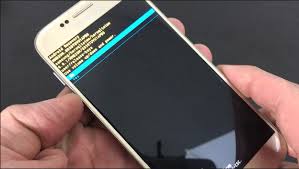Are you struggling with your Samsung device and need a fresh start? Well, you’re in luck!
In this article, we’ll guide you through the process of factory resetting your Samsung device. Whether you’re looking to fix performance issues or simply want to wipe all data from your device, we’ve got you covered.
So, grab your Samsung device and let’s get started on this reset journey together.
Understanding Factory Reset on Samsung Devices
A factory reset erases all data and settings on your Samsung device. It is a powerful tool that can help you troubleshoot issues or prepare your device for resale.
When you perform a factory reset, your phone or tablet will be restored to its original factory settings, just like when you first bought it. This means that all your personal data, such as contacts, messages, photos, and apps, will be permanently deleted.
It’s important to back up your data before proceeding with a factory reset.
To perform a factory reset on your Samsung device, go to the settings menu, select ‘General Management,’ then ‘Reset,’ and finally, tap on ‘Factory Data Reset.’ Follow the on-screen instructions to complete the process.
Preparing for a Factory Reset on Samsung
Before you begin prepping for a factory reset on your Samsung device, make sure you have backed up all your important data. This step is crucial to ensure that you don’t lose any valuable information during the reset process.
Start by connecting your Samsung device to a computer or cloud storage service and transfer all your files, photos, videos, contacts, and any other important data. Double-check that everything has been successfully backed up before proceeding.
It’s also a good idea to make a list of any apps or settings that you want to restore after the factory reset. This way, you can easily set up your device again without missing anything important.
Taking the time to prepare beforehand will make the factory reset process smoother and help you avoid any unnecessary data loss.
Step-by-Step Guide to Factory Resetting a Samsung Device
To begin the step-by-step guide, you’ll need to access the Settings menu on your device.
Swipe down from the top of the screen and tap the gear icon to open the Settings menu.
Once you’re in the Settings menu, scroll down and tap on the ‘General Management’ option.
In the General Management menu, tap on ‘Reset’ to proceed.
Next, tap on ‘Factory data reset’ and then select ‘Reset’ again.
You may be asked to enter your device’s passcode or pattern lock for security purposes.
After confirming your decision, your device will begin the factory reset process.
It’s important to note that this action will erase all data on your device, so make sure to back up any important files before proceeding.
Important Considerations Before Performing a Factory Reset on Samsung
Before performing a factory reset, it’s crucial to back up all your important files and data. This step is important because a factory reset will erase all the data and settings on your Samsung device, returning it to its original state.
By backing up your files and data, you ensure that you don’t lose any important information during the reset process. To back up your files, you can use various methods such as transferring them to a computer, using cloud storage services, or using the Samsung Smart Switch app.
It’s essential to double-check that you have successfully backed up all your files before proceeding with the factory reset. Taking this precautionary step will help you avoid any unnecessary loss of data and ensure a smooth reset process.
Troubleshooting Common Issues During a Samsung Factory Reset
During troubleshooting, you can try restarting your device to see if it resolves any common issues. Sometimes, a simple restart can fix minor glitches and improve the performance of your Samsung device.
To do this, press and hold the power button until the power options appear on the screen. Then, select the ‘Restart’ option and wait for your device to reboot.
If restarting doesn’t solve the problem, you can also try clearing the cache partition. This can help remove any temporary files that might be causing issues.
To clear the cache partition, you need to boot your device into recovery mode. Once in recovery mode, use the volume buttons to navigate to the ‘Wipe cache partition’ option and select it using the power button.
After the process is complete, restart your device and see if the issue is resolved.
Conclusion
In conclusion, factory resetting your Samsung device can be a useful solution for various issues. By following a step-by-step guide and considering important factors, you can easily perform a factory reset and restore your device to its original settings.
However, it is crucial to be cautious and backup all important data before proceeding. If any issues arise during the process, troubleshooting methods can help resolve them.
With these considerations in mind, you can confidently factory reset your Samsung device and enjoy a fresh start.


